
Freyr, sometimes anglicized as Frey, is a widely attested god in Norse mythology, associated with kingship, fertility, peace, prosperity, fair weather, and good harvest. Freyr, sometimes referred to as Yngvi-Freyr, was especially associated with Sweden and seen as an ancestor of the Swedish royal house. According to Adam of Bremen, Freyr was associated with peace and pleasure, and was represented with a phallic statue in the Temple at Uppsala. According to Snorri Sturluson, Freyr was "the most renowned of the æsir", and was venerated for good harvest and peace.

In Norse mythology, Freyja is a goddess associated with love, beauty, fertility, sex, war, gold, and seiðr. Freyja is the owner of the necklace Brísingamen, rides a chariot pulled by two cats, is accompanied by the boar Hildisvíni, and possesses a cloak of falcon feathers. By her husband Óðr, she is the mother of two daughters, Hnoss and Gersemi. Along with her twin brother Freyr, her father Njörðr, and her mother, she is a member of the Vanir. Stemming from Old Norse Freyja, modern forms of the name include Freya, Freyia, and Freja.

In Norse mythology, Njörðr is a god among the Vanir. Njörðr, father of the deities Freyr and Freyja by his unnamed sister, was in an ill-fated marriage with the goddess Skaði, lives in Nóatún and is associated with the sea, seafaring, wind, fishing, wealth, and crop fertility.
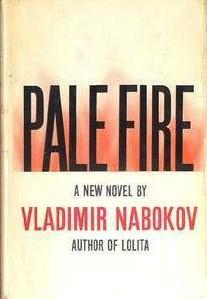
Pale Fire is a 1962 novel by Vladimir Nabokov. The novel is presented as a 999-line poem titled "Pale Fire", written by the fictional poet John Shade, with a foreword, lengthy commentary and index written by Shade's neighbor and academic colleague, Charles Kinbote. Together these elements form a narrative in which both fictional authors are central characters. Nabokov wrote Pale Fire in 1960–61, after the success of Lolita had made him financially independent, allowing him to retire from teaching and return to Europe. Nabokov began writing the novel in Nice and completed it in Montreux, Switzerland.
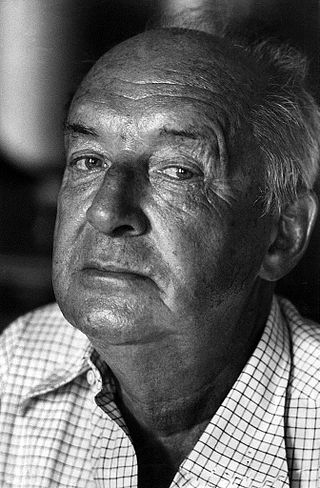
Vladimir Vladimirovich Nabokov, also known by the pen name Vladimir Sirin, was a Russian-American novelist, poet, translator, and entomologist. Born in Imperial Russia in 1899, Nabokov wrote his first nine novels in Russian (1926–1938) while living in Berlin, where he met his wife. He achieved international acclaim and prominence after moving to the United States, where he began writing in English. Nabokov became an American citizen in 1945 and lived mostly on the East Coast before returning to Europe in 1961, where he settled in Montreux, Switzerland.

Olaf Tryggvason was King of Norway from 995 to 1000. He was the son of Tryggvi Olafsson, king of Viken, and, according to later sagas, the great-grandson of Harald Fairhair, first King of Norway. He is numbered as Olaf I.

In Norse mythology, Gerðr is a jötunn, goddess, and the wife of the god Freyr. Gerðr is attested in the Poetic Edda, compiled in the 13th century from earlier traditional sources; the Prose Edda and Heimskringla, written in the 13th century by Snorri Sturluson; and in the poetry of skalds. Gerðr is sometimes modernly anglicized as Gerd or Gerth.
Charles Kinbote is a fictional character who acts as the unreliable narrator in Vladimir Nabokov's novel Pale Fire.
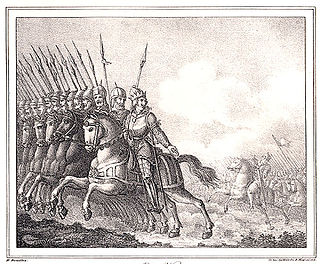
Eadgils, Adils, Aðils, Adillus, Aðísl at Uppsölum, Athisl, Athislus or Adhel was a semi-legendary king of Sweden, who is estimated to have lived during the 6th century.
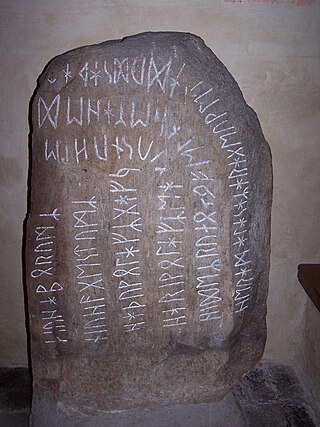
Blót or geblōt are religious ceremonies in Germanic paganism that centred on the killing and offering of an animal to a particular being, typically followed by the communal cooking and eating of its meat. Old Norse sources present it as a central ritual in Old Nordic religion that was intimately connected with many wider aspects of life. Large blót are often described as taking place in halls, organised by the rulers of the region who were expected to carry out the practice on behalf of the people. Blót were central to the legitimacy of rulers and Christian rulers refusing to hold them were at times replaced by more willing alternatives and driven out of the land. Smaller, household blót were sometimes recorded as being led by women. Beyond strengthening legitimacy for the ruling elites, the performance of blót was often in order to ensure the fertility of the land, a good harvest and peace, although they are also recorded as being performed for divination or to achieve desired results in legal matters.
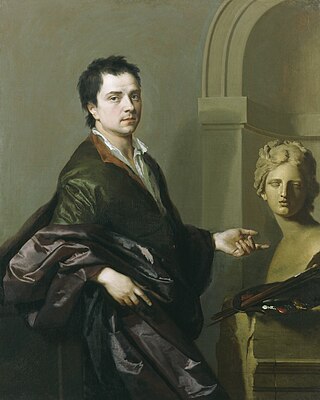
Michael Dahl was a Swedish portrait painter who lived and worked in England most of his career and died there. He was one of the most internationally known Swedish painters of his time. He painted portraits of many aristocrats and some members of royal families, such as Queen Anne of Great Britain, Prince George of Denmark and the exiled Queen Christina of Sweden.

The Disting is an annual market which has been held in Uppsala, Sweden, since pre-historic times. The name originally referred to the great assembly called the Thing of all Swedes, and it is derived from the fact that both the market and the thing were held in conjunction with the Dísablót, the great blóts (sacrifices) for female powers called dísir at the Temple at Uppsala. They were all originally held at the end of February or in early March.

Johannes Messenius (1579–1636) was a Swedish historian, dramatist and university professor. He was born in the village of Freberga, in Stenby parish in Östergötland, and died in Oulu, in modern-day Finland.

The Dísablót was the blót which was held in honour of the female spirits or deities called dísir, from pre-historic times until the Christianization of Scandinavia. Its purpose was to enhance the coming harvest. It is mentioned in Hervarar saga, Víga-Glúms saga, Egils saga and the Heimskringla. The celebration still lives on in the form of an annual fair called the Disting in Uppsala, Sweden.
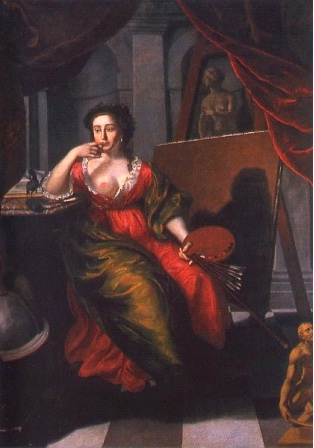
Anna Maria Ehrenstrahl, was a Swedish Baroque painter. She is known for her allegorical works paintings, portraits and group portraits.

David Krafft, from 1719 David von Krafft, was a German-Swedish painter, the nephew and student of David Klöcker Ehrenstrahl and his successor as painter to the Swedish Royal Court.
The sonargǫltr or sónargǫltr was the boar sacrificed as part of the celebration of Yule in Germanic paganism, on whose bristles solemn vows were made in some forms of a tradition known as heitstrenging.
Arnold Johan Messenius was a Swedish enfant terrible and royal historiographer who was condemned to death and executed under the reign of Queen Christina.

Cristina, regina di Svezia is an opera in five parts and three acts composed by Jacopo Foroni. The Italian libretto by Giovanni Carlo Casanova is loosely based on the events surrounding the abdication of Christina, Queen of Sweden in 1654. The opera premiered on 22 May 1849 at the Mindre Theatre in Stockholm.
Fróði's Peace is a semi-legendary period of peace throughout Northern Europe that is referenced in Nordic mythology, skaldic poetry and historical accounts.


















